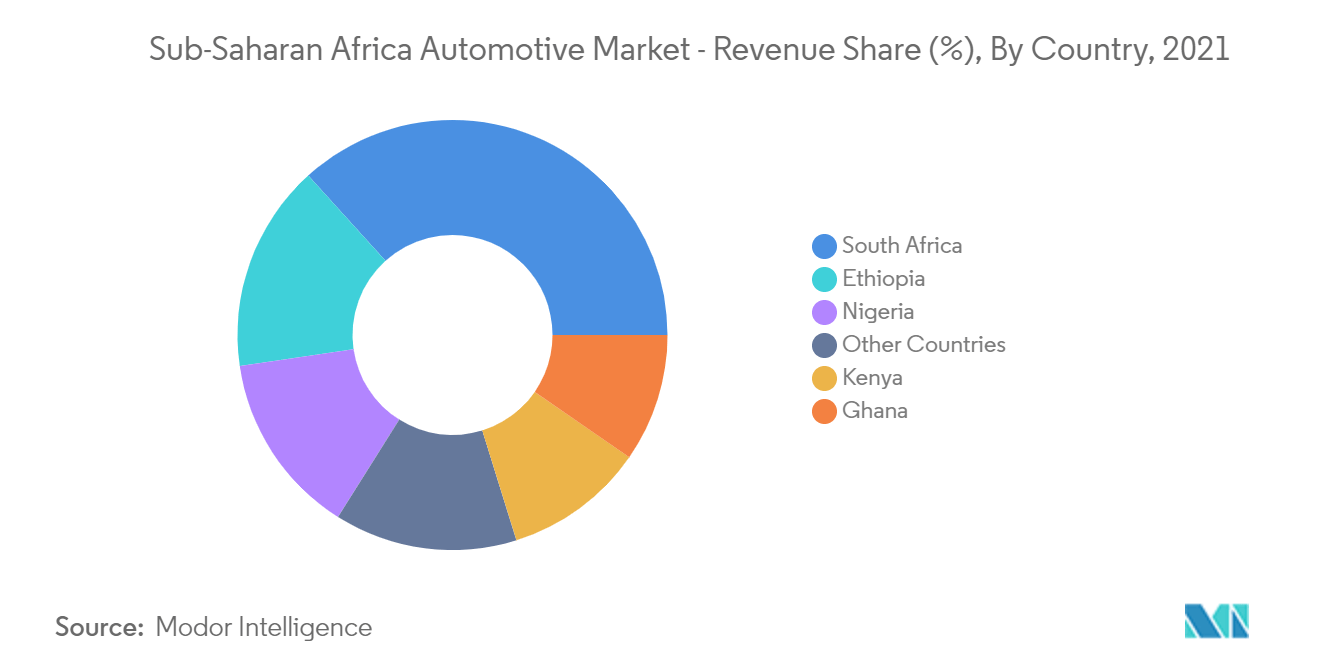Market Trends of Sub Saharan Africa Automotive Industry
This section covers the major market trends shaping the Sub Saharan Africa Automotive Market according to our research experts:
Rising Other Alternative Fuel to Drive Demand in the Market
Transport currently accounts for 10% of Africa's total greenhouse gas (GHG) emissions, and this figure is expected to rise as Sub-Saharan Africa's vehicle park expands. The vehicle parc is expected to grow from 25 million vehicles today to an estimated 58 million by 2040 in the six countries that account for roughly 70% of Sub-Saharan Africa's annual vehicle sales and 45 percent of the region's population (South Africa, Ethiopia, Rwanda, Uganda, Kenya, and Nigeria), driven by urbanization and rising incomes. As its vehicle park expands, Sub-Saharan Africa's challenge will be to push for more sustainable mobility while avoiding becoming a dumping ground for the world's unwanted used ICE vehicles.
While momentum is building, Sub-Saharan Africa faces some unique challenges in its electric mobility transition, including unreliable electricity supply in some cases, low vehicle affordability, and reliance on used vehicles. Many countries have made significant progress toward improving electricity access (all six countries mentioned have urban electricity access rates above 70%, with some exceeding 90%); however, electricity reliability remains a concern. Furthermore, the 2020 System Average Interruption Disruption Index (SAIDI) for Sub-Saharan Africa was reported to be 39.30, compared to 0.87 for OECD high-income countries.
Africa's infrastructure is also improving, which will help the region's automotive market. Some countries are expected to drive growth until 2023, with countries such as Ghana playing key roles.
- Ghana aspires to be a developed nation by 2030. If the country meets even half of its target, the Ghanaian automotive market is expected to expand at a rapid pace, as economic growth is directly proportional to the growth of automotive markets.
Various companies are also either launching or planing to launch their electric vehicle in the region to witness a considerable market share in the upcoming years. For instance,
- The recently launched Eleksa CityBug is the most affordable EV to hit South African roads. The new Eleksa costs R230 000 at the point of sale. In the country, the CityBug is still proving its roadworthiness.

South Africa is Expected to be the Continent's Largest Automotive Industry
The vehicle interest rates have been fluctuating across the Sub-Saharan African countries annually and it is highly dependent on the economic growth of the individual country. The South African automotive industry is still adapting to market forces. The increasing number of imported vehicles and the aftereffects of the global economic crisis, particularly the uncertainty regarding European markets and the impact on local exports, are affecting manufacturing.
These forces have also required the automotive aftermarket to respond. Both areas are further impacted by rising electricity and raw material prices, as well as rising labor rates, low productivity, and a lack of flexibility. Automotive companies must continuously develop and maintain customer relationships, achieve technical excellence and retain skilled labor pools, and manage significant risks in order to survive and grow.
Auto sales in South Africa in 2022. Toyota sold 7,086 units (18.4% share) of passenger vehicle sales in June, VW sold 5,652 units (14.7% share), and Suzuki sold 4,622 units (12.0% share). Daimler Trucks and Buses sold 387 units (14.9%), Toyota 353 units (13.6%), and Isuzu 322 units (12.4%) of commercial vehicle sales in June.


